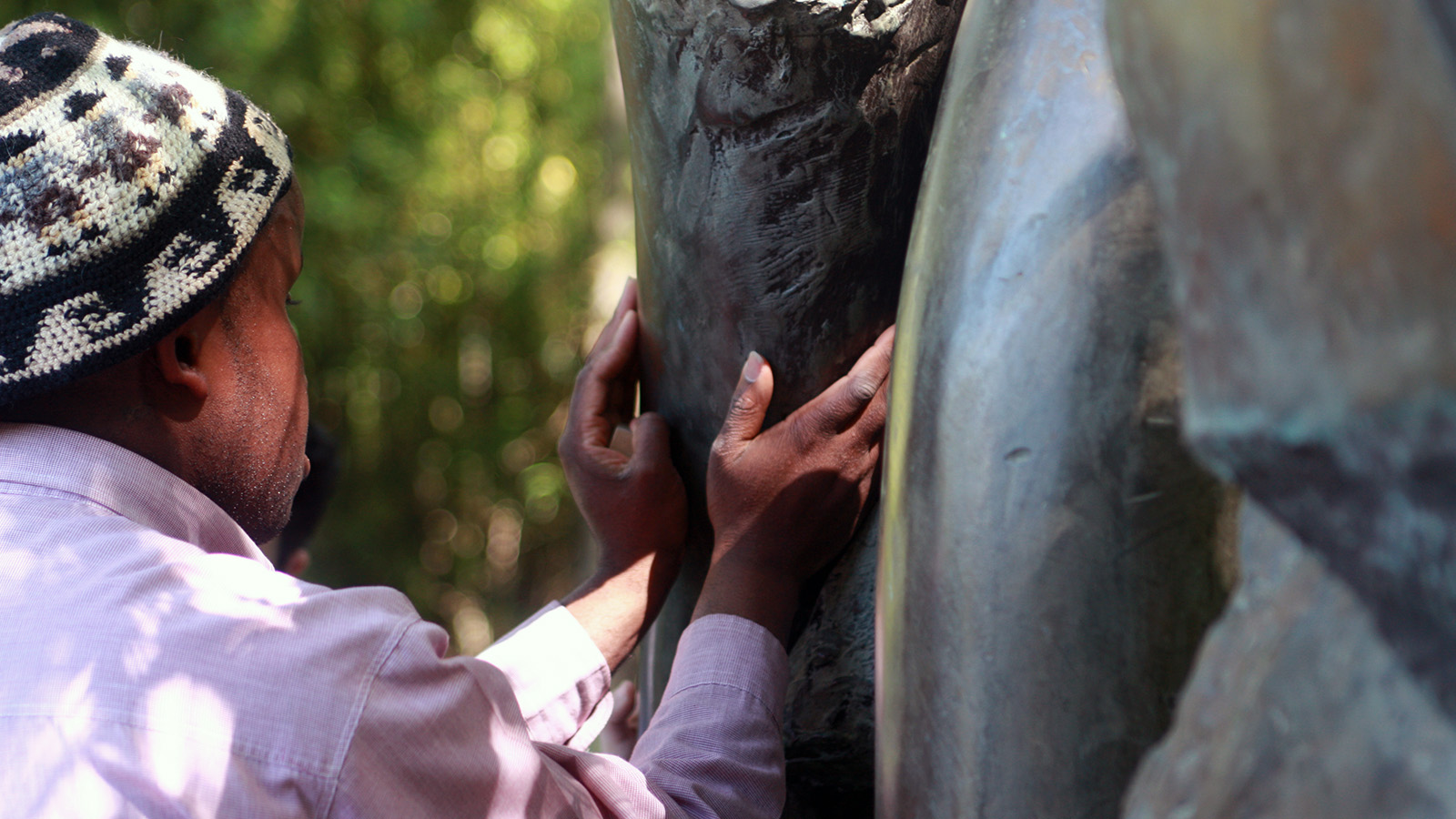The cultural participation of youth audiences with specific educational needs. The role of the Museum
The Calouste Gulbenkian Museum, through its educational service, created in the 1970s, views its work with young people, and with those with specific educational needs, as a pillar of its pedagogical action.
Today, the Cultural Mediation and Digital Strategy sector team includes educators specialized in various specific educational needs, who, in addition to welcoming visitors to the Museum and temporary exhibitions, develop educational and research projects in the subject of mediation with youth audiences with specific intellectual, physical or social needs.
One of these projects, developed between 2021 and 2023, is I AM – Inclusive and Accessible Museums. Funded by the European Erasmus+ program, the project brought together five institutions – the Mu-zee-um (Belgium), the Berlin Wall Foundation (Germany), the MUSAC (Museum of Contemporary Art of Leon, Spain), the VABUMU (Museum of Occupations and Freedom, Estonia) and the creACTive (North Macedonia) – together with the Calouste Gulbenkian Museum.
Throughout the project, in face-to-face and online meetings, the partners shared and discussed working methodologies they had developed, seeking to answer one important question: how can we encourage cultural participation and make cultural institutions more attractive and inclusive for young people in vulnerable contexts?
By combining the experience and creativity of these different institutions – art museums, history museums, monuments, an organization for arts education and a youth organization – the project emerged as a follow-up to a previous European project, TANDEM (2017-2020). Its main goal had been to learn about the pedagogical best practices directed at cultural audiences with disabilities employed by the partner institutions.
Having identified the need to work in depth with young people, and to carry out renewed research and testing of up-to-date pedagogical methodologies with this audience in particular, the I AM project agreed on two areas of work.
The first one was the development, evaluation, and testing of distinct models of virtual experiences for youth audiences in the context of their cultural participation. This research resulted in the production of five typologies of virtual experiences: live interactive visit, pre-recorded interactive visit, live perspectives, pre-recorded perspectives and virtual classroom.
In this axis, the Museum developed the methodology for the virtual classroom, with the activity Curator for a Day. The contents of these activities proved to be flexible enough to allow young audiences in various situations of vulnerability – whether physical, social, or intellectual – to fully enjoy and participate in a cultural activity.
The second area of work focused on the creation of sensory tools aimed specifically at young people with intellectual disabilities. Here, the mediation of the collections and other heritage of the partner institutions through the five senses – smell, sight, touch, hearing and taste – was as the main entry point into the visitor experience.
Given its long-standing practice with audiences with specific needs, namely in the field of intellectual disabilities, the Calouste Gulbenkian Museum chose to direct its research towards the development of pedagogical materials, rather than techniques, which would support this type of mediation and approach to the collection.
Thus, if most partners developed a specific sensory journey for their collections, the Museum developed its sensory journey through the design and implementation of pedagogical material that allows the introduction of sensory exploration tools in the exhibition rooms in an inclusive and accessible manner, and without compromising the safety of the participants and the works of art on display.
Pioneer European projects like I AM allow us to devote time and attention to issues that, serving a small segment of the public visiting museums and cultural institutions, require a deep specialization and knowledge of methodologies, techniques, and pedagogical content by the mediation teams. In this way, the Museum and its partners contribute not only to the sharing of professional practices, but also to a social model in which young audiences in diverse contexts of vulnerability can exercise their right to full participation and cultural fruition.
The reflection and conclusions of the I AM project summarized here are available for further reading in the e-book I AM – pedagogical and artistic best practices.
